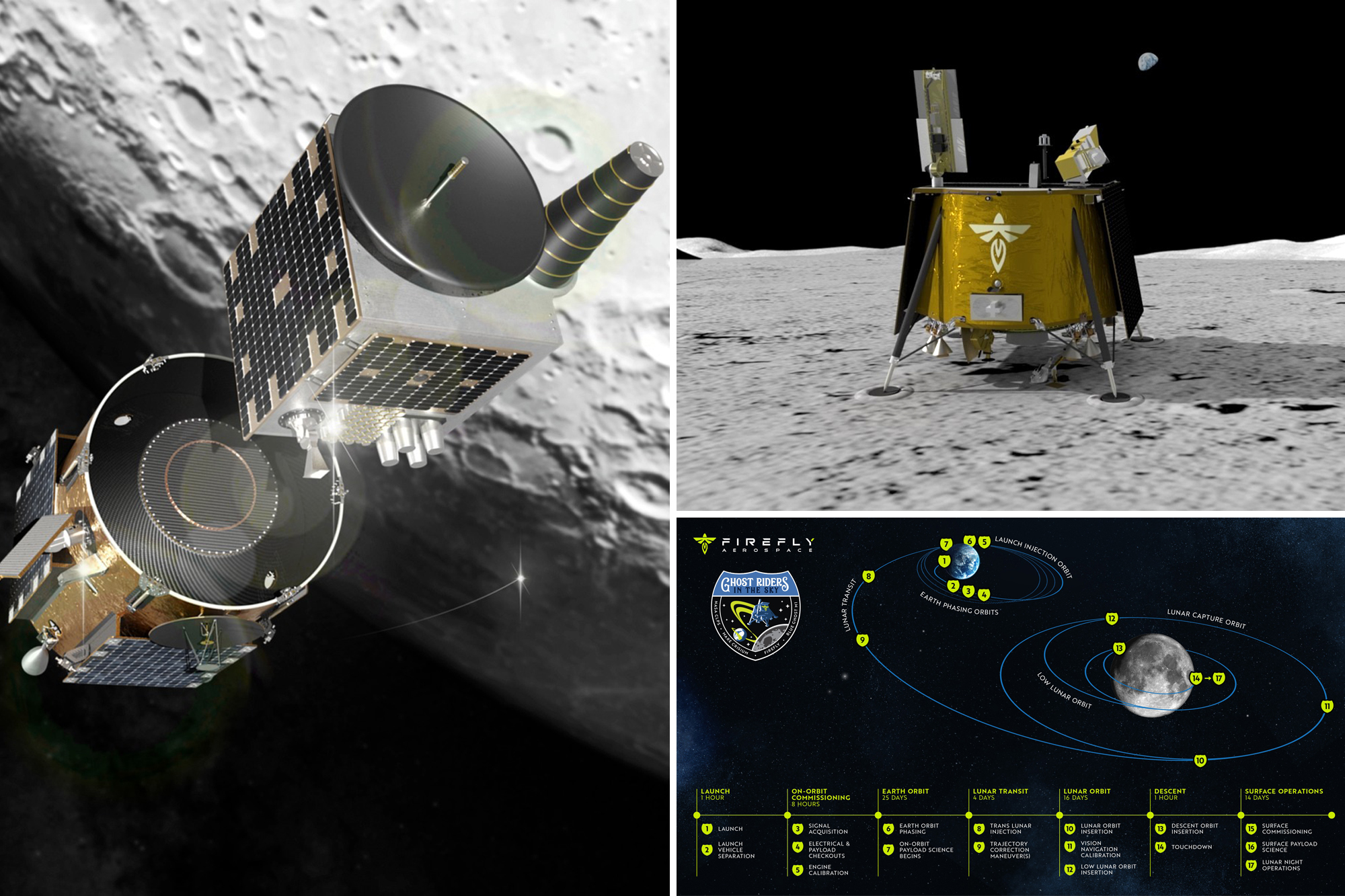
NASA is preparing to fly more science to the surface of the Moon with its next commercial mission on a Firefly Aerospace lunar lander.
Firefly Aerospace is among the American companies selected by NASA for its Commercial Lunar Payload Services (CLPS) program. Under this program, the space agency sends its cargo to the Moon via private robotic missions to prepare for the next human landing on the Moon in 2027. Firefly has named its first CLPS mission Ghost Riders in the Sky.
The Blue Ghost lander was flown from Firefly Aerospace’s headquarters outside Austin, Texas, to the Kennedy Space Center in Florida this week, where it awaits liftoff. Firefly Aerospace and its launch provider, SpaceX, are targeting a six-day launch window that opens in mid-January.
Unlike the previous two CLPS missions from Intuitive Machines and Astrobotic, Firefly is flying only NASA payloads instead of providing space for commercial and marketing companies. All 10 payloads are for the US space agency.
What does NASA hope to achieve with Blue Ghost?
After launch and 45 days of spaceflight, Blue Ghost will attempt to land on the far side of the Moon near a volcanic feature called Mons Latreille within Mare Crisium. The region was the site of three Soviet-era robotic moon landings in the 1970s.
NASA Program Scientist Ryan Watkins said the landing site was chosen because of the data the agency hopes to collect about the Moon and future landings there. Payloads flying on Blue Ghost 1 include instruments to study lunar dust, its geophysical characteristics, and the interaction of space weather.
“This particular landing site was chosen because it avoids large magnetic anomalies on the lunar surface that could disrupt some of our payload measurements. It is also believed to have limited rocks in abundance, which will allow for safe operations with our onboard training,” Watkins said. “In addition, this volcanic feature will serve as a good reference point for our navigational capabilities. terrain aboard the spacecraft, as well as cargo on the Firefly.“
Among the concerns for future human missions to the Moon is lunar dust, known as regolith. These tiny, sharp particles can stick to anything and anyone.
Several payloads on Blue Ghost will study how lunar dust sticks to different materials and investigate how electromagnetism can prevent dust from clumping. An array of cameras on the lander will capture the moment the robotic mission touches down to help engineers understand the resulting plume of lunar dust.
“As we design technologies and experiments for the lunar surface, the regolith must be better understood and accounted for,” Watkins said. “Moon dust can affect mechanical components, degradation of Earth-based material, and human health.”
Other payloads will use X-ray imaging to study Earth’s magnetosphere from the Moon.
“We can use this data to inform decisions on Earth about things like weather forecasting, GPS and satellite link protection,” Watkins said.
Firefly Aerospace CEO Jason Kim said the mission will operate for 14 days on the lunar surface. Blue Ghost will collect scientific payload data at all times.
At the end of the operations, Kim said the lander will capture a celestial spot last documented by Apollo 17 astronaut Eugene Cernan.
“Well, then finish the mission by capturing a solar eclipse and a lunar sunset on high-definition video, before operating for several hours in the lunar night,” Kim said, adding that they “expect to capture a first phenomenon and documented by Eugene Cernan during his final steps on Apollo 17, where he observed a horizon glow as lunar dust rose to the surface.
The Ghost Riders in the Sky mission is expected to last 60 days from launch to the end of lunar operations.
#Blue #Ghost #lunar #lander #study #space #weather #NASA #science
Image Source : nypost.com